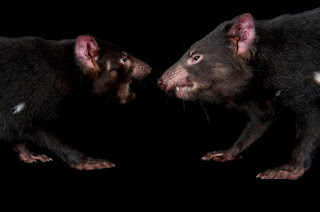 |
| Man pointing to stomach contents consisting of a small dinosaur consumed by a mammal (commons) |
A Dino Eating Mammal?
Hello all you fine people out there!
How has your week been? My had its ups and downs. The best part was having my two daughters and four grandchildren her for a visit. The down part is, yesterday my youngest daughter lost her baby at 6 weeks in her pregnancy. My heart and prayers go out to her. So things are a little up side down here.
This week I am sharing something fascinating that I just uncovered; a fossil of a mammal with the remainders of its meal, a dinosaur, in its stomach. After doing a brief research I still could not track down the exact date of the discovery. This is the closest I could come; information about the discovery was released in Nature Journal 2000 and again in 2005.
The fossils that evolutionists named Repenomamus robustus and R. giganticus were recovered in the Liaoning province of China, a place known for its well preserved fossils. Except in size the mammals look extremely similar to a Tasmanian devil though scientists say there are no “modern” living, relatives. The Tasmanian devil is the world's largest living carnivorous marsupial, reaching 30 inches in length and weighing up to 26 pounds. “Adults of R. robustus were the size of a Virginia opossum with an estimated mass of 4–6 kg (8.8–13 lb) while the known adult of R. giganticus was about
50% larger with a total length of around 1 m (3 ft 3 in) and an estimated mass of 12–14 kg (26–31 lb).”1
 |
| R. robustus skull (commons) |
Secular scientists believe these animals are from the mesozoic time period. “Mesozoic mammals are commonly portrayed as shrew or rat-sized animals that were mainly insectivorous, probably nocturnal and lived in the
shadow of dinosaurs… [The] stomach contents associated with a skeleton of R. robustus reveal remains of a juvenile Psittacosaurus, a ceratopsian dinosaur. Our discoveries constitute the first direct evidence that some triconodont mammals were carnivorous and fed on small vertebrates, including young dinosaurs, and also show that Mesozoic mammals had a much greater range of body sizes than previously known.”2
 |
| Tasmanian devils (commons) |
 |
| Depiction of what a Psittacosaurus may have looked like |
 |
| Depiction of the extinct R. robustus (commons) |
Until next time,
God bless and take care,
Willow Dressel
References:


No comments:
Post a Comment